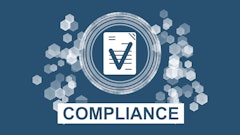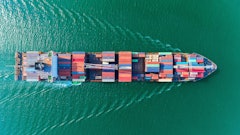
On May 11, 2023, the Parliament of Canada passed Bill S-211, also known as the Fighting Against Forced Labor and Child Labor in Supply Chains Act. This is an important piece of legislation as it puts the onus back onto Canadian businesses to prove they’re doing the necessary due diligence to minimize the risks of forced labor and child labor in their supply chains.
Several countries, including the U.S., UK, Germany and Australia, have already introduced similar laws. It almost feels like Canada is playing catch-up with the rest of the world and perhaps hasn’t taken ethical sourcing as seriously as it should. That might make sense if child labor and forced labor weren’t prevalent in Canadian imports. But data from World Vision Canada proves otherwise. There has been a 30% increase in imports linked to labor exploitation over the past five years. As if that’s not troubling enough, there are about 79 million children working in dirty, dangerous and degrading jobs globally.
On top of these statistics, trade between China and Canada hit record levels in 2022, with imports breaking the $100 billion mark for the first time. If you ask me, this Act couldn’t have come soon enough. Of course, China isn’t the only country that Canada trades with. Bilateral goods trade between Canada and India rose to $8.2 billion in 2022 – an increase of 25% from the previous year.
If you look at the labels on apparel, accessories and consumer electronics, you’ll see that the vast majority of imports in Canada and the US are manufactured in India, China, Bangladesh and other countries in Asia. Investment in Asia has tripled over the past 10 years, with the region accounting for more than $1 of every $2 of new net investment in the past decade. The region is on track to account for 40% of the world’s consumption and more than 50% of global GDP by 2040.
This heavy reliance on Asian suppliers is something we also found in a recent Creditsafe study, with 64% of North American manufacturing companies using suppliers in Asia to produce their goods. But what’s even more disheartening from the study is that 42% of North American companies admitted they’d still work with a supplier that’s been found to be using slave labor. Why aren’t companies taking ethical sourcing seriously enough? How can we get companies to look at compliance checks as more than just a tick-box exercise? What can companies do to prepare for compliance with Canada’s new legislation? Let’s explore these questions a bit further.
Understanding the Act and Everything it Entails
With legislation like this, there’s a lot of legal language and detailed requirements. It can sometimes be hard to make sense of it all. So, let’s unpack some key requirements and make it a bit easier to understand – so compliance is a lot easier.
The Act goes into effect on January 1, 2024. It applies to “entities,” which are defined to include entities listed on a Canadian stock exchange, have a place of business in Canada, do business in Canada or have assets in Canada. For companies not listed in Canada, they are only deemed to be “entities” if they also meet at least two of the following three criteria (based on their consolidated financial statements for at least one of its two most recent financial years):
- The entity has at least CAD $20 million in assets;
- The entity generates at least CAD $40 million in revenue;
- The entity employs an average of at least 250 employees.
The Act includes the following requirements:
- Entities to whom the Act applies are required to report on the measures taken to prevent and reduce the risks of using child labor or forced labor in their supply chains.
- The entity must make the report available to the public, including by publishing it in a prominent place on its website. The registry itself is maintained by the Minister based on the entity's submission, but they do not submit directly to the registry. This registry will allow consumers, civil society organizations and other stakeholders to access information about a company's actions to address forced labor and child labor.
- The first reports under the Act are due by no later than May 31, 2024.
- The Canadian government will enforce compliance with the reporting obligations. Failing to provide a report, providing false or misleading information, or failing to keep records could result in penalties and prosecution by the Canadian government. The penalties could equal CAD $250,000 per violation.
Although the law itself doesn’t mandate specific due diligence measures, it requires entities to state which steps they have taken to detect and minimize the risk of using child labor and forced labor in their supply chains. This may include conducting risk assessments, engaging with suppliers and taking appropriate action to address identified issues.
Ethical Sourcing is a Tough Nut to Crack Without Supplier Due Diligence
Ethical sourcing can be incredibly tough to crack without supplier due diligence. You can’t just choose suppliers that you like and trust, or that have a good track record of delivering high-quality goods on time. Sure, that’s part of the criteria you should be using to vet suppliers. But it’s only one part of it. Supplier due diligence should go beyond the basic financial and credit checks to include compliance checks.
Many companies are simply running compliance checks to tick a box and show that they did the necessary due diligence. But they’re not using the results to protect the integrity of their global supply chains. It’s more of a tick-box exercise than anything else. And this needs to change if brands want to restore customer confidence and position themselves for long-term revenue growth.
The key is not to just run a compliance check once and then be done. Just like with credit risk, brands should regularly monitor their global supply chain for compliance issues. That’s the purpose of compliance checks – to give you the information you need to avoid working with unethical, corrupt suppliers and, ultimately, prevent your company from incurring financial, legal and reputational damage as a result.
Brands Need to Stop Thinking Profitability and Social Responsibility are Two Separate Things
Most businesses have seen it as an either/or scenario – meaning you can’t be profitable and socially responsible. But I don’t agree with that. According to a report by the World Economic Forum, it’s estimated that sustainable and ethical sourcing practices cut supply chain costs between 9% and 16%, while increasing revenues by up to 20% for responsible products and boosting brand value by 15% to 30%.
And as the world has battled disease, wars, social injustice and economic downturns, shoppers expect brands to do more than just deliver high-quality products and provide exceptional service. They expect brands to be socially responsible and ethical. In fact, research carried out by OpenText found that nearly nine in 10 (88%) global consumers would choose to buy from companies with ethical sourcing structures in place over ones that did not. The research also found that 83% of global consumers are willing to spend more on a product if they can be certain that it’s ethically sourced.
Patagonia is a prime example of how a purpose-driven, sustainable company can drive revenue growth and profitability. Touted as the world’s most responsible company, Patagonia monitors all its processes, including every step of the manufacturing process with the goal of minimizing its environmental and social impact.
The clothing brand is also a certified B Corporation, having met or exceeded stringent criteria consistently and earning an ‘outstanding’ score in each of the last five years. Best of all, Patagonia hasn’t had to sacrifice profits to be socially responsible. The brand has an estimated value of $3 billion. It sells more than $1 billion in outdoor clothing and gear.
Not prioritizing ethical sourcing and supplier due diligence could have serious consequences. Not only could you lose the loyalty and repeat sales of your customers, but your brand reputation could take a huge hit with negative publicity and plummeting stock prices. And that’s on top of the hefty government fines and prosecution you could face if you don’t comply with the Fighting Against Forced Labor and Child Labor in Supply Chains Act.
Many Businesses Will Leave Compliance Preparation to the Last Minute
It's not just that Canadian businesses need to stay abreast of the requirements of this Act (and other regulations). Given how little Canadian businesses know about the law, I have a strong hunch that many will wait until the last minute (Q4) to even think about what they need to do to comply with the law. But that will be too late. There’s a lot of foundational groundwork that needs to be done now, including:
- Doing a full audit and analysis of current supply chains – what’s working well, gaps, weaknesses and threats.
- Using the data and insights from the supply chain audit to outline a clear strategy and plan for building in the necessary protocols, systems, staff and digital tools to meet all of the Act’s requirements.
- Vetting, onboarding and implementing digital compliance tools (and integrating them across the entire tech stack) to protect the integrity of supply chains and provide a digital audit trail as part of the reporting requirements.
Using Digital Compliance Tools to Meet the Reporting Requirements
Technology alleviates the fears and risks of doing business with international suppliers. Most importantly, it exposes a variety of legal, financial and compliance risks that could slow down production, reduce customer loyalty, lower sales and cause irreparable damage to their reputation.
Of course, it isn’t just useful for making sure suppliers have strong financials, low debt and a positive track record of payments. Technology is also critical for screening international suppliers against real-time sanctions databases, global law enforcement lists, adverse media, state-owned companies and Politically Exposed Persons profiles. As a business, the last thing you want is to sign a contract with a supplier only to find out after the fact that they’re using children in their factories or are locking workers inside the premises and forcing them to work against their will.
In the context of Canada’s new Act, digital compliance tools will help businesses kill multiple birds with one stone. On the one hand, they can run online compliance checks on every supplier before signing a contract and handing over work orders. Doing so is a smart move, as it means businesses can avoid being surprised by unethical practices after they’ve already signed a contract. At the same time, businesses can use the detailed reports created from those compliance checks and include them in the reports they submit to the Ministry. Essentially, those compliance check reports will provide a digital audit trail and proof of the measures that businesses have taken to minimize the risks of forced labor and child labor in their supply chains.


























